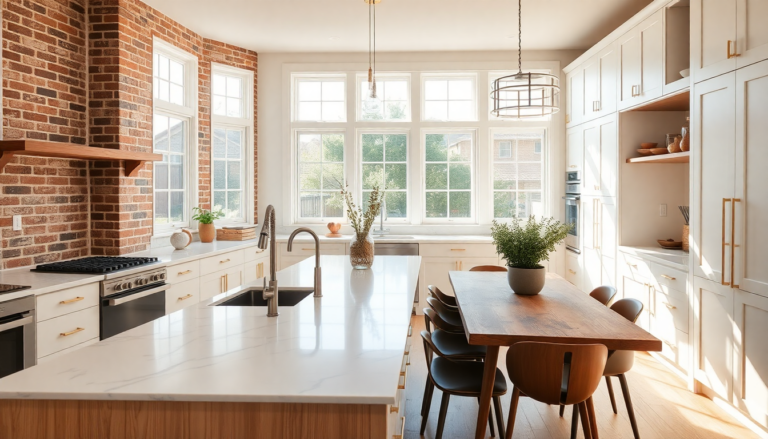Argomenti trattati
When it comes to interior design, few spaces spark more creativity than the kitchen—especially in historic homes. This is where modern updates are not just welcomed, but often expected. A prime example is the recent renovation of a cozy 550-square-foot kitchen in Santa Barbara, California, where contemporary flair meets early 20th-century charm. Interior designer Kishani Perera and architect Tom Henson demonstrate how thoughtful updates can breathe new life into a cherished space while honoring its historical roots.
The challenge of modernizing historic kitchens
Updating a kitchen in a historic house is no small feat. It requires a delicate balance between preserving the original design and embracing modern conveniences. In this project, the designers took a bold approach with a gut renovation that maintained the kitchen’s historical integrity while seamlessly integrating must-have modern features. One clever strategy was to hide contemporary appliances, like the refrigerator, behind custom cabinetry that echoes the period’s style. Isn’t it fascinating how modern functionality can coexist with history?
Perera highlights that the entire back wall of the kitchen is adorned with light gray textured field tiles, creating a visual bridge to the past while giving the space a fresh, contemporary feel. The backsplash—crafted from Waterworks’ Magma in a chic gray crackle finish—adds a touch of elegance that complements the home’s historical essence. These design choices reveal how data-driven insights into color and texture can significantly influence the outcome of a renovation.
Design elements that tell a story
As they modernized the kitchen, Perera and Henson infused early 20th-century design elements that not only enhance the kitchen’s aesthetic but also narrate the story of the home’s history. The vaulted ceiling and wooden counter stools pay homage to the architectural style of the era, weaving a narrative that resonates across time. “As someone who values history,” Perera mentions, “I love that this home is an integral part of Santa Barbara’s past.”
The strategic use of color also played a pivotal role in this kitchen’s transformation. Perera notes that the vibrant cabinet colors pop against the more muted plaster walls, creating a warm and inviting atmosphere. Elements like walnut, copper, and brass not only add visual interest but also enrich the tactile experience of the space. The carefully selected hardware, echoing these metallic accents, underscores the importance of thoughtful details in any renovation project.
Creating a timeless kitchen
A standout feature of this renovation is the custom-made rack that showcases a set of cherished copper pots inherited by the client. This personal touch adds warmth and nostalgia, transforming the kitchen from a mere functional space into something truly timeless. Don’t you think it’s the little details that really make a difference?
With over two decades in the interior design field, Kishani Perera blends creativity with practicality like no other. Her journey began with a degree in interior design from UCLA in 1998, and she has since turned numerous homes into stunning spaces that honor both modern living and historical significance. This kitchen renovation is a testament to her expertise and vision, proving how data-driven design can lead to beautiful, functional, and historically respectful spaces.

